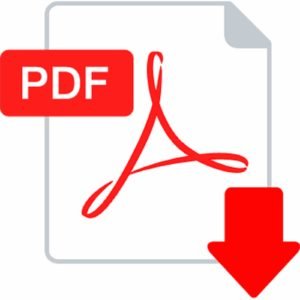Strategies to mitigate and manage compassion fatigue amongst Nurses working in Antiretroviral (arv) Clinics: exploration of literature
Unified Nursing Research, Midwifery & Women’s Health Journal
Volume 1, Issue 1, June 2020, Pages: 12-20
Received: Mar. 17, 2020; Accepted: Apr. 17, 2020; Published: Apr. 27, 2020
Authors: Dr. Mercia Jane Tellie, University of South Africa.
Abstract:
Introduction:
Nurses who work in the HIV field care for large numbers of HIV-positive patients. The demanding nature of the care needed by HIV-positive patients causes nurses to become physically and emotionally exhausted, resulting in an increase in nurses’ vulnerability to develop compassion fatigue. Compassion fatigue is an extreme state of tension and preoccupation of nurses with the suffering of those in their care and can negatively impact on nurses’ health. The key to the prevention of compassion fatigue is awareness and various strategies to manage compassion fatigue are described in the literature. Compassion fatigue affects the individual’s health, family, work performance, relationship with employers, and the ability to provide empathetic care – hence the need to prevent and manage it.
The objective of this paper is to describe strategies to mitigate and manage compassion fatigue. The search for literature from articles was guided by search terms, namely: compassion fatigue, compassion fatigue prevention, and management strategies were conducted using the Cumulative Index to Nursing and Allied Health Literature (CINAHL), PubMed, Google Scholar, and Ebscohost and included English language articles published in peer-reviewed journals between 2008 and June 2018. The selected articles were reviewed and synthesized for this paper. The preliminary search identified 50 articles, of which 29 met the inclusion criteria. However, manual searching of the reference list of articles was undertaken to search for additional articles that would fit the inclusion criteria. Various strategies to prevent and manage compassion fatigue were described in selected articles, including, Accelerated Recovery Program (ARP), bereavement support, debriefing, psychological support, mindfulness-based training, resiliency programmes, and self-care.
Keywords: Accelerated Recovery Programme, bereavement support, compassion fatigue, compassion satisfaction, debriefing, mindfulness-based training, resilience, self-care
Download Full Article & Abstract here:
Copyright
© Copyright 2020, All Rights Reserved. Use of this content signifies your agreement to the T&Cs of Unified Citation Journals
This abstract of Manuscript/Paper/Article is an open access Manuscript/Paper/Article distributed under the Creative Commons Attribution License (https://creativecommons.org/licenses/by/4.0/) which allows and permits unrestricted use, distribution, and reproduction in any medium, provided the original work is properly cited and accepted.
This communication and any documents, or files, attached to it, constitute an electronic communication within the scope of the Electronic Communication Privacy Act (https://it.ojp.gov/PrivacyLiberty/authorities/statutes/1285)
To citation of this article: Dr. Mercia Jane Tellie, Strategies to mitigate and manage compassion fatigue amongst Nurses working in Antiretroviral (arv) Clinics: an exploration of literature, Unified Nursing Research, Midwifery & Women’s Health Journal
References:
- Visser, C. A., Wolvaardt, J. E., Cameron., D & Marincowitz, G. J. O. (2018). Clinical mentoring to improve quality of care provided at three NIM-ART facilities: A mixed method study. African Primary Health Care Family Medicine, 10 (1), a1579. https://doi.org/10.4102/phcfm.v101.1579
- Bam, N. E., & Naidoo, J. R. (2014). Nurses experiences in palliative care of terminally–ill HIV patients in a level 1 district hospital. Curationis, 37(2),1-19.
- Houck, D. (2014). Helping nurses cope with grief and compassion fatigue: An educational intervention. Clinical Journal of Oncology Nursing, 18(4), 454-458.
- Hesselgrave, J. 2014. Coping with compassion fatigue in pediatric oncology nursing. Oncology Times. [cited 2014 October 20]. Available from: http://journals.lww.com/oncology-times/Fulltext/2014/08101/Coping_with_Compassion_Fatigue_in_Pediatric.1.aspx
- Gates, D. M., & Gillespie, G. I. (2008). Secondary traumatic stress in nurses who care for traumatised women. The Association of Women’s Health, Obstetric and Neonatal Nurses, 37(2), 243-249. DOI:10.1111/j.1552-6909-2008-00228.x
- Al-Majid, S., Carlson, N., & Kiyohara, M. (2018). Assessing the degree of compassion satisfaction and compassion fatigue among critical care, oncology and charge nurses. The Journal of Nursing Administration, 48(6), 310-315. DOI:10.10997/NNA.000000000000620.
- Adimando, A. (2017). Preventing and alleviating compassion fatigue through self-care: An educational workshop for nurses. Journal of Holistic Nursing, XX(XXXX), 1-14. Doi:10.1177/0898010117721881.
- Cocker, F., & Joss, N. (2016). Compassion Fatigue among Healthcare, Emergency and Community Service Workers: A Systematic Review. International Journal of Environmental Research and Public Health 2016, 13(618), 1-12. doi:10.3390/ijerph13060618.
- Potter, P., Deshields, T., Berger, J.A., Clarke, M., Olsen, S., & Chen, L. (2013). Evaluation of a compassion fatigue resiliency program for oncology nurses. Oncology Nursing Forum, 40(2), 180-187.
- Boyle, D. A. (2011). Countering compassion fatigue: A requisite nursing agenda. Online Journal of Issues in Nursing, 16(1):1-11.
Tag
Women’s Health Journals | International Women’s Health Journals | Women’s Health Issues Journals | Midwifery & Women’s Health Journals | Obstetrics and Gynecology Journals | Health Care for Women Journals | Reproductive Sciences Journals | Violence Against Women Journals | Gynecology & Obstetrics Journals | Health Journals | Women & Health Journals | Reproductive Biomedicine Online Journals | Psychology of Women Quarterly Journals | Maternal and Child Health Journals | Obstetric, Gynecologic, & Neonatal Nursing Journals | Maturitas Journals | Women & Aging Journals


